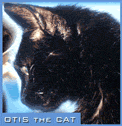Special to The Palm Beach Post
Sunday, December 23, 2007
On Wednesday, the Ringling Bros. and Barnum & Bailey Circus lumbers into the South Florida Fairgrounds Expo Center in Palm Beach County for 12 performances. To those considering stepping into the big top to attend one of these shows, I offer this polite request:
Please don’t.
Who am I – some animal-hating killjoy out to spoil your fun? Far from it. I’m a father, a pretty passionate animal lover and, not coincidentally, I host a radio program about animals that airs on Tampa National Public Radio affiliate WMNF.
I do not claim to be a renowned animal expert. But over the years, I’ve done a great deal of research into an array of animal matters. In hosting the show, I’ve had the good fortune to interview a number of renowned animal experts, experiences that have yielded one indisputable conclusion:
Animals in circuses endure a relentlessly awful life, marked by constant travel in cramped quarters, where access to food and water and proper veterinary care can’t always be counted on, but punishment, pain, cruelty and, sometimes, premature death can be.
Hyperbole? Hardly. Any unit of Ringling Bros. is on the road for six to 11 months at a time, typically traveling in small train cars or trucks that are often poorly ventilated and/or lack basic creature comforts.
But the travails of transportation practically seem glorious alongside the covert and overt cruelty of the training that prepares – if that’s the right word – these animals to perform in “the greatest show on Earth.” Allow me to pose two related rhetorical questions:
Do you think that tigers – who, like most animals, are deathly afraid of fire – would be naturally inclined to jump through a ring of fire?
Do you think that elephants would be naturally inclined to balance on a colorful perch, stand on their hind legs or heads, or dance?
The answer, of course, is a resounding “No.” So, to achieve the sort of unnatural and physically challenging behaviors described above and others, the training is fear-driven, revolving around punishing and hurting the animals: whipping them, beating them with rods, etc.
Elephants often are restrained, then beaten until they understand not to fight back. The chief tool of the elephant training trade is the bull hook, or ankus, which is heavy and clublike and has a pointy, sharp tip. Imagine a heavy and sharp fireplace poker. The trainers hit the elephants with the bull hook in various parts of their body, so that they comply – “learn.”
Sounds too horrendous to believe, doesn’t it? But there is plenty of testimony by former Ringling employees that says as much, and lots of video that shows as much – some of it as new as this year. To see an extensive array of germane video footage in less than eight minutes, you could hardly do better than watching the award-winning piece on Ringling and its abuse of Asian elephants by television journalist Leslie Griffith, who has won nine local Emmys and two Edward R. Murrow Awards, It’s at www.youtube.com/watch?v=I3rQzLOLR4M.
Keen observers of Ms. Griffith’s work will notice that it’s from 2004, and might reasonably wonder whether Ringling has improved its treatment of animals. Nope. In October 2006, Robert Tom, a former animal keeper who worked for Ringling for nearly two years (his wife, Margaret, also was employed by the circus) issued a notarized declaration – six pages of hair-raising accounts of animal neglect, abuse and cruelty in and around the big top.
Mr. Tom’s experiences echo those of Archele Faye Hundley, a young mother of five, who worked as part of the animal crew. Her lengthy September 2006 notarized declaration, notes: “I quit the circus because the animal abuse was too upsetting. The abuse was not once in awhile, it occurred every day.”
The American Society for the Prevention of Cruelty to Animals, along with three other not-for-profit animal welfare organizations – The Fund For Animals, Animal Welfare Institute and Animal Protection Institute – are in the midst of litigation, under the Federal Endangered Species Act, against Ringling. The allegations detail the routine abuse and neglect of Asian elephants. The groups are joined in the lawsuit by a former Ringling employee, Tom Rider, who worked as a barn man for the elephants for 21/2 years, and is featured in the Griffith piece.
I digress here briefly for a prediction: Ringling owner Kenneth Feld surely will dispatch someone to respond to this piece – could be an official employee or maybe someone in the guise of a Ringling fan writing a letter to the editor – to dismiss these contentions as the ravings of a misinformed loon.
There will be rosy scenarios offered about their training, about their “conservation efforts” (their Center for Elephant Conservation is little more than a facility to restock the touring units with fresh pachyderms), about how great their animals are treated, etc. There are millions of dollars at stake, and elephants are the prime drawing cards, so when someone is critical of the operation, Mr. Feld and his fellow Ringling panjandrums typically mobilize quickly. And they’ll say anything.
Nonetheless, let’s just say, for the sake of ludicrous argument, that nothing untoward is visited on elephants in the course of their big top training. They’re still forced to travel in those train cars or trucks to perform up to three shows a day and to spend most of their non-performance time anchored by leg chains.
Let me hasten to add that I’m not at all universally opposed to circuses, just those that use animals. There are numerous animal-free circuses – perhaps the most famous is Cirque du Soleil, but the last list I saw featured more than 20 such outfits.
If your family has a hankering to see a circus, go to one of those. But attending a Ringling performance is tantamount to endorsing animal abuse.



